 We were discussing differences between the worlds of marathon swimming and marathon running with double Olympic medalist Bob Seagren who runs numerous large marathon runs and open water swims.
We were discussing differences between the worlds of marathon swimming and marathon running with double Olympic medalist Bob Seagren who runs numerous large marathon runs and open water swims.Measuring a marathon running course is done by counter hooked to a bicycle (see photo to left). The precise calculation of the 42.195K or 26 miles 385 yards and is a time-consuming process.
 Notwithstanding the popular GPS (global positioning systems) used by travelers worldwide, GPS is not used in the marathon running world. Details of the process used are found here. In the U.S., courses are certified by USA Track & Field authorized measurers.
Notwithstanding the popular GPS (global positioning systems) used by travelers worldwide, GPS is not used in the marathon running world. Details of the process used are found here. In the U.S., courses are certified by USA Track & Field authorized measurers.The tools that are used include a bicycle, a Jones Course Measuring Device (shown above), a steel tape, a spring scale, a thermometer, notebook and pencils, a pocket calculator, lumber crayon or chalk, nails and hammer, spray paint, masking tape and bike tools to repair a bicycle tire flat.
A certified marathon running course is measured by the Jones Counter that counts every time the bicycle tire moves forward. Temperature readings are taken to make sure the steel tape is of the proper measurement and the bicycle is precisely calibrated four times along the course to assure an accurate measurement. The measurements can even be affected by changes in air pressure and air leaks in the bicycle tire.
A methodology that can be greatly appreciated by open water swimmers, the course is measured as the shortest possible route that a runner could run. That practically means that the course is measured diagonally between corners when crossing a street and measured straight through consecutive turns in the road.
After everything has been measured, re-measured, documented and certified by the state certifier, the marathon run course is certified for 10 years – but only if there is no road construction that may affect the course or changes to the course, start or finish lines.
So how does the marathon swimming world measure its courses?
In the Netherlands, according to Richard Broer, webmaster of the comprehensive Open Water Swimming in Europe website, writes that it is mandatory to use official landmarks to measure the distance of the swims, although GPS is a less expensive alternative.
 In Australia, sanctioned 5K and 10K swims must be set by GPS. But, according to Greg Towle, Australia’s National Open Water Team Coach, sanctioned national championships in Australia have been recently held in rowing courses which makes course set-up straightforward, but the course is still checked by GPS.
In Australia, sanctioned 5K and 10K swims must be set by GPS. But, according to Greg Towle, Australia’s National Open Water Team Coach, sanctioned national championships in Australia have been recently held in rowing courses which makes course set-up straightforward, but the course is still checked by GPS. According to Dr. Jim Miller, U.S. Masters Swimming national championship events are measured by GPS with the exception of the USMS cable swims that are surveyed. These cable swims are conducted on a ¼-mile cable course. The course is initially surveyed and an immovable post or pylon is set in the lake bed with the outside of the post being the actual ¼-mile course. In the open water races in the State of Virginia, the post is permanent, but some races in other locations replace the post every year with the need to resurvey every year.
According to Dr. Jim Miller, U.S. Masters Swimming national championship events are measured by GPS with the exception of the USMS cable swims that are surveyed. These cable swims are conducted on a ¼-mile cable course. The course is initially surveyed and an immovable post or pylon is set in the lake bed with the outside of the post being the actual ¼-mile course. In the open water races in the State of Virginia, the post is permanent, but some races in other locations replace the post every year with the need to resurvey every year.The cable (with buoys) is placed in the water four days before the event and is tightened daily until the event, since it loosens up as the water soaks in the cable. Turn buoys are placed at the turn (inside the post) and mid-course.
Jay Thomas, a long-time open water referee with USA Swimming and FINA, reminds us that USA Swimming rules state, "[The race] course shall be measured as accurately as possible with the available navigational or survey equipment." According to Jay, many race directors plan their race course on a chart, or more recently, with Google Earth. Once the course has been set, the officials check it with a GPS and make adjustments as necessary to yield the appropriate distance.
USA Swimming has additional guidance for the Quarter Mile Straightaway courses (i.e., the cable swims). The allowable tolerance of the cable is ±6 inches measured from the outer edge of the turn point.
 On the international professional marathon swimming circuit, FINA 10K Marathon Swimming World Cup and FINA Open Water Swimming Grand Prix races are measured by GPS.
On the international professional marathon swimming circuit, FINA 10K Marathon Swimming World Cup and FINA Open Water Swimming Grand Prix races are measured by GPS. According to Philip Rush, races in New Zealand use both GPS and a map system that is more accurate than GPS.
The distances of many races in the oceans are affected by tides. The distances of some open water races held in dams, reservoirs and lakes are affected by the amount of rainfall (or snowfall) before the race. Tides and (a lack of or an abundance of) rainfall can change the starting and finish lines of open water races.
We wonder how local races worldwide measured. Are there any unique methodologies in measuring your local race?
Photo shows Valerio Cleri in the Singapore FINA 10K Marathon Swimming World Cup.


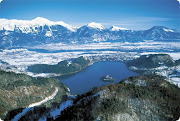
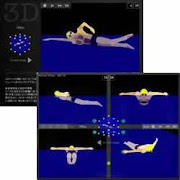
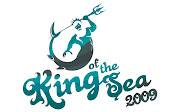


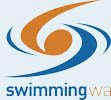
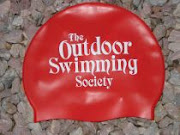

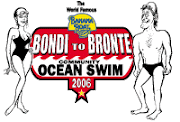


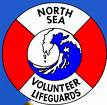
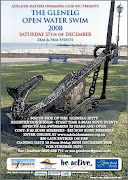





No comments:
Post a Comment